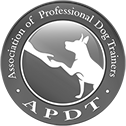![]() Group classes are currently unavailable. Please check back soon for future updates.
Group classes are currently unavailable. Please check back soon for future updates.
Abused Dog Training
Dog: Cookie
"The shelter told us before adopting Cookie that she had been abused which had caused her to become very reactive towards other dogs and new people. After working with Steve, we are now able to have company over again and are able to walk her past other dogs without her losing control. She has also become much more responsive to our commands and seems much more confident in herself. Thank you so much Steve, we wouldn't have been able to do it without you!" - Allesandra O.
Training an abused dog requires patience, empathy and a deep understanding of trauma recovery. Unlike basic obedience training, abused dog training focuses first on rebuilding trust and creating a safe, predictable environment where the dog can feel secure. Abused dogs often display fear-based behaviors such as aggression, extreme shyness or anxiety, and traditional correction methods can worsen these issues. The most important first step is positive reinforcement and gentle consistency, helping the dog learn that human interaction doesn’t lead to pain or fear. Establishing a bond built on safety and respect lays the foundation for all future training and emotional healing.
Proper training for an abused dog can be life-changing, transforming a fearful, withdrawn animal into a confident and loving companion. By using specialized techniques like desensitization, counter-conditioning and building structured routines, trainers can help abused dogs overcome their past experiences. Training doesn’t just teach basic commands, it gives the dog a new framework for how to interact with the world.
In summary, with patience and the right approach, abused dogs can rebuild their trust in humans, develop healthy behaviors and experience the full joy of living in a caring home.



